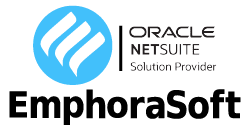
How to Implement SuitePeople for Comprehensive HR Management in NetSuite
Introduction
Human resources (HR) is a critical function in any organization, responsible for managing the most valuable asset – people. As companies grow and evolve, it becomes increasingly important to have a robust and integrated HR management system that can scale with the business. NetSuite, a leading cloud-based enterprise resource planning (ERP) solution, offers a comprehensive HR module called SuitePeople. This blog post will provide a detailed guide on how to successfully implement SuitePeople for effective HR management within the NetSuite ecosystem.
Understanding SuitePeople
Before diving into the implementation process, it is essential to understand what SuitePeople is and how it can benefit your organization. SuitePeople is a fully integrated HR management solution within NetSuite, designed to streamline and automate various HR processes. It offers a wide range of features and functionalities, including:
- Employee Information Management: SuitePeople serves as a centralized repository for all employee data, including personal information, job details, compensation, and performance records. It provides a single source of truth for employee information, ensuring data accuracy and consistency across the organization.
- Payroll Processing: With SuitePeople, you can streamline your payroll processes by automatically calculating wages, taxes, and deductions based on predefined rules and policies. It integrates seamlessly with NetSuite’s accounting module, ensuring accurate financial reporting and compliance.
- Benefits Administration: SuitePeople simplifies benefits management by allowing you to define and track employee benefits, such as health insurance, retirement plans, and time off. Employees can easily enroll in benefits through self-service portals, reducing administrative burden on HR teams.
- Performance Management: SuitePeople provides tools for setting goals, conducting performance reviews, and tracking employee development. It enables managers to provide continuous feedback and recognition, fostering a culture of high performance and engagement.
- Onboarding and Offboarding: With SuitePeople, you can automate the onboarding process for new hires, including generating offer letters, collecting necessary documents, and assigning training tasks. It also streamlines the offboarding process, ensuring a smooth transition for exiting employees.
- Time and Attendance Tracking: SuitePeople allows employees to log their time and submit time-off requests through intuitive self-service portals. Managers can easily approve or reject requests, and the system automatically updates employee records and payroll calculations.
- HR Analytics and Reporting: SuitePeople provides built-in analytics and reporting capabilities, allowing HR teams to gain valuable insights into workforce metrics such as headcount, turnover, and performance. These insights can inform data-driven decision-making and strategic HR initiatives.
By leveraging SuitePeople, organizations can manage their entire HR lifecycle within a single, unified platform. This eliminates the need for multiple disparate systems and ensures data consistency across the organization.
Planning for SuitePeople Implementation
Implementing SuitePeople requires careful planning and preparation to ensure a smooth and successful transition. The following key steps should be considered before embarking on the implementation journey:
- Define Your HR Processes
Begin by thoroughly mapping out your current HR processes and identifying areas that can be improved or automated with SuitePeople. This exercise will help you determine the scope of the implementation and prioritize the features and functionalities that are most critical to your organization.
Engage with key stakeholders from various departments, including HR, finance, and IT, to gather their input and requirements. Conduct workshops or focus groups to understand their pain points, expectations, and desired outcomes from the SuitePeople implementation. This collaborative approach ensures that the implementation aligns with the needs of the entire organization.
- Assess Your Data
Evaluate the quality, accuracy, and completeness of your existing HR data. This includes employee information, job roles, compensation structures, performance records, and any other relevant data points. Identify any data gaps or inconsistencies that need to be addressed before migrating the data into SuitePeople.
Perform a data cleansing exercise to standardize data formats, remove duplicates, and ensure data integrity. This step is crucial to ensure a smooth data migration process and maintain data accuracy within SuitePeople.
- Identify Integration Points
Determine how SuitePeople will integrate with other modules within NetSuite, such as accounting, payroll, and time and expense management. Map out the data flows and integration touchpoints to ensure seamless data synchronization and avoid any duplication of efforts.
Additionally, consider any third-party integrations that may be required, such as benefits providers, background check services, or learning management systems. Identify the necessary APIs or integration protocols to enable smooth data exchange between SuitePeople and these external systems.
- Establish a Project Team
Assemble a dedicated project team consisting of key stakeholders from HR, IT, and other relevant departments. Assign clear roles and responsibilities to each team member to ensure effective collaboration and communication throughout the implementation process.
Appoint a project manager who will oversee the entire implementation, coordinate activities, and ensure that milestones are met within the defined timeline. The project manager should have a deep understanding of both HR processes and NetSuite functionalities to effectively guide the team.
Consider engaging a NetSuite implementation partner or consultant who specializes in SuitePeople implementations. Their expertise and experience can greatly facilitate the implementation process, provide best practices, and help mitigate any potential risks or challenges.
- Develop a Project Plan
Create a comprehensive project plan outlining the implementation timeline, milestones, and deliverables. Break down the implementation into manageable phases, such as planning, configuration, data migration, testing, user training, and go-live.
Assign realistic timelines to each phase and identify dependencies between activities. Allocate sufficient buffer time to accommodate any unforeseen delays or issues that may arise during the implementation process.
Include regular status meetings and progress reviews in the project plan to keep all stakeholders informed and aligned. Establish a communication plan to ensure that project updates and any changes are effectively communicated to the relevant parties.
Configuring SuitePeople
Once the planning phase is complete, the next step is to configure SuitePeople to align with your organization’s specific HR requirements. The following key areas should be focused on during the configuration process:
- Employee Records
Set up employee records in SuitePeople, including personal information, job details, compensation, and benefits. Ensure that all the necessary data fields are properly mapped and populated.
Define the employee lifecycle stages, such as new hire, active, terminated, or retired, and configure the corresponding workflows and approval processes. This includes setting up onboarding checklists, offboarding tasks, and any other relevant employee-related processes.
- Organizational Structure
Define your organization’s hierarchical structure within SuitePeople. This involves creating departments, locations, and job roles, as well as establishing reporting relationships between employees.
Configure the organizational chart to reflect the current structure and reporting lines. This will enable accurate workflow routing, approvals, and access controls based on the defined hierarchy.
- HR Policies and Processes
Configure SuitePeople to reflect your company’s HR policies and processes. This may involve setting up approval workflows for various HR activities, such as leave requests, performance reviews, and job requisitions.
Define the different types of leave available to employees, such as vacation, sick leave, or parental leave, and configure the corresponding accrual rules and entitlements. Set up the necessary workflows and approval processes for leave management.
Create performance review templates and define the review cycles, rating scales, and competencies to be assessed. Configure the performance management workflows, including goal setting, self-assessments, manager evaluations, and feedback processes.
- Security and Permissions
Assign appropriate security roles and permissions to ensure that employees have access to only the information and functionality relevant to their job roles. This helps maintain data confidentiality and prevents unauthorized access to sensitive HR data.
Define role-based access controls for different HR functions, such as employee self-service, manager self-service, and HR administration. Restrict access to confidential information, such as compensation data or performance reviews, based on the defined security roles.
- Payroll Integration
If you plan to use SuitePeople for payroll processing, configure the necessary payroll settings, including pay frequencies, tax withholdings, and deduction codes. Ensure that the payroll data is properly synchronized with your accounting module to maintain accurate financial records
Set up payroll workflows, including timesheet approvals, payroll calculations, and direct deposit preferences. Configure any additional payroll-related processes, such as year-end tax reporting or generating pay stubs.
Data Migration and Testing
With the configuration of SuitePeople complete, the next phase involves migrating your existing HR data into the new system. This process can be complex, especially if you have a large volume of data spread across multiple systems. To ensure a successful data migration, consider the following best practices:
- Data Cleansing
Before migrating your data, perform a thorough data cleansing exercise. This involves identifying and removing any duplicate or irrelevant records, standardizing data formats, and ensuring data consistency across all fields.
Engage with HR team members and other relevant stakeholders to validate the data and address any discrepancies or missing information. This step is crucial to ensure the integrity and accuracy of the data being migrated into SuitePeople.
- Data Mapping
Map your existing data fields to the corresponding fields in SuitePeople. This may require some data transformation to ensure compatibility with the new system.
Create a detailed data mapping document that outlines the source and destination fields for each data element. This document will serve as a reference during the migration process and help ensure that data is correctly transferred into SuitePeople.
- Data Validation
After migrating the data, conduct extensive data validation to ensure accuracy and completeness. Verify that all employee records, job roles, compensation details, and other critical information have been migrated correctly.
Perform spot checks on a sample of records to validate the data integrity. Compare the migrated data against the source systems to identify any discrepancies or missing information. Address any issues identified during the validation process before proceeding further.
- User Acceptance Testing (UAT)
Engage key HR users to perform thorough testing of SuitePeople functionalities using the migrated data. This includes testing various HR processes, such as employee onboarding, performance reviews, leave management, and payroll processing.
Develop comprehensive test cases and scenarios that cover all aspects of SuitePeople. Encourage users to provide feedback and report any issues or discrepancies they encounter during the testing phase.
Address any defects or issues identified during UAT and perform retesting to ensure that the system is functioning as expected. Obtain sign-off from the HR team and other key stakeholders before proceeding to the go-live phase.
- Data Reconciliation
Compare the migrated data in SuitePeople with the original source systems to ensure data consistency and accuracy. Perform a comprehensive data reconciliation exercise to identify any discrepancies or missing information.
Generate reports from both the source systems and SuitePeople and compare the data side by side. Investigate and resolve any discrepancies to ensure that the migrated data aligns with the original source data.
Document the data reconciliation process and maintain an audit trail of any data modifications made during the migration process. This documentation will serve as a reference for future data audits and compliance purposes.
User Training and Change Management
Implementing SuitePeople involves not only technical configuration but also user adoption and change management. It is crucial to ensure that HR staff and employees are well-prepared to use the new system effectively. Consider the following strategies for user training and change management:
- Develop Training Materials
Create comprehensive training materials, including user guides, video tutorials, and quick reference guides. These materials should cover all aspects of SuitePeople, from basic navigation to advanced features and functionalities.
Tailor the training materials to the specific needs of different user groups, such as HR administrators, managers, and employees. Use clear and concise language and include practical examples and scenarios to enhance understanding.
Make the training materials easily accessible to users through a centralized repository, such as an intranet or learning management system. Encourage users to refer to these materials whenever they need guidance or assistance.
- Conduct Training Sessions
Organize training sessions for HR staff and employees to familiarize them with SuitePeople. Provide hands-on exercises and real-life scenarios to reinforce learning and build confidence in using the system.
Deliver training sessions through various formats, such as in-person workshops, webinars, or self-paced e-learning modules. Consider the learning preferences and availability of different user groups when designing the training program.
Engage subject matter experts or experienced trainers to conduct the sessions and provide guidance to users. Encourage active participation and allow ample time for questions and discussions during the training sessions.
- Designate Super Users
Identify a group of super users within the HR department who can serve as subject matter experts and provide ongoing support to other users. These individuals should have a deep understanding of SuitePeople functionalities and be able to troubleshoot common issues.
Provide additional training and resources to the super users to enhance their knowledge and skills. Empower them to serve as the first point of contact for user queries and support requests.
Establish a network of super users across different departments or locations to ensure that support is readily available to all employees. Encourage collaboration and knowledge sharing among the super user community to continuously improve the support process.
- Communicate Change
Develop a comprehensive communication plan to inform employees about the transition to SuitePeople. Clearly articulate the benefits of the new system and how it will improve HR processes and employee experience.
Use various communication channels, such as email, intranet announcements, town hall meetings, or newsletters, to reach out to employees. Provide regular updates on the implementation progress and share success stories to build excitement and anticipation.
Address any concerns or questions employees may have about the new system. Provide clear instructions on how to access and use SuitePeople, including login credentials, system requirements, and support channels.
Encourage open communication and feedback from employees throughout the implementation process. Actively listen to their suggestions and concerns and incorporate their input into the change management strategy.
- Provide Ongoing Support
Establish a robust support structure to assist users during and after the go-live phase. This may include a dedicated helpdesk, user forums, or an internal knowledge base where users can find answers to common questions and share best practices.
Train the helpdesk staff on SuitePeople functionalities and common support scenarios. Ensure that they have access to the necessary resources and escalation paths to provide timely and effective support to users.
Monitor user adoption and satisfaction through surveys, feedback sessions, or usage analytics. Identify areas where additional training or support may be required and proactively address any challenges or barriers to adoption.
Continuously update and enhance the support materials and knowledge base based on user feedback and evolving system requirements. Encourage users to contribute their own tips, tricks, and best practices to foster a collaborative learning environment.
Go-Live and Post-Implementation
After completing the configuration, data migration, testing, and user training, it’s time to go live with SuitePeople. To ensure a successful go-live and post-implementation phase, consider the following key considerations:
- Cutover Planning
Develop a detailed cutover plan that outlines the steps and timelines for transitioning from the old system to SuitePeople. Identify the critical path activities and dependencies to ensure a smooth transition.
Communicate the cutover plan to all stakeholders, including HR staff, IT teams, and employees. Provide clear instructions on the cutover process, including any system downtime, data freeze periods, or changes to existing processes.
Conduct a final data reconciliation and validation before the cutover to ensure that all data is up to date and accurate. Perform a dry run of the cutover process to identify any potential issues or risks and develop contingency plans.
- Hypercare Support
Provide dedicated hypercare support during the initial weeks after go-live. Allocate additional resources, such as IT support staff and HR subject matter experts, to handle the increased volume of user queries and issues.
Establish a command center or war room to coordinate support activities and ensure prompt resolution of critical issues. Monitor system performance, user feedback, and support tickets closely to identify any emerging trends or recurring problems.
Conduct daily status meetings with the project team and key stakeholders to review progress, discuss challenges, and make necessary adjustments to the support plan. Communicate regular updates to users on the status of issue resolution and any known system limitations.
- Continuous Improvement
Regularly gather feedback from users and analyze system usage data to identify areas for improvement. Conduct surveys, focus groups, or user interviews to understand user experience and identify pain points or opportunities for enhancement.
Establish a continuous improvement process to prioritize and implement system enhancements and optimizations. Engage with key stakeholders, including HR teams, IT, and end-users, to validate requirements and ensure alignment with business objectives.
Develop a roadmap for future enhancements and integrations based on the identified improvement opportunities. Communicate the roadmap to stakeholders and provide regular updates on the progress of improvement initiatives.
- Benefits Realization
Measure and communicate the benefits realized from the SuitePeople implementation. Identify key performance indicators (KPIs) and metrics that align with the project objectives and HR strategic goals.
Collect and analyze data on HR process efficiency, employee satisfaction, data accuracy, and compliance. Compare the post-implementation metrics with the baseline data to quantify the improvements achieved.
Share the success stories and benefits realized with stakeholders, including senior management, HR teams, and employees. Celebrate the achievements and recognize the contributions of the project team and key stakeholders.
Leverage the benefits realized to build a case for continuous investment in HR technology and process improvement initiatives. Align the benefits with the overall business strategy and demonstrate the value of HR as a strategic partner.
Conclusion
Implementing SuitePeople for comprehensive HR management in NetSuite is a transformative journey that can significantly enhance your organization’s HR processes and employee experience. By following a structured implementation approach, carefully configuring the system, migrating data, and providing comprehensive user training, you can unlock the full potential of SuitePeople.
Get in Touch
We know what NetSuite can do and how it can help you. Schedule your free NetSuite assessment today
FAQs:
SuitePeople is an integrated HR management solution within NetSuite that centralizes and automates HR functions like employee data management, payroll, benefits administration, performance management, and more. By using SuitePeople, organizations can streamline HR processes, enhance data accuracy, and improve employee experience through a unified platform.
The key steps include:
- Defining HR Processes to align with business goals.
- Assessing and Cleansing HR Data for accuracy.
- Identifying Integration Points with other NetSuite modules.
- Establishing a Project Team and assigning roles.
- Developing a Project Plan to manage timelines and milestones.
SuitePeople uses role-based access controls to ensure employees can only access data relevant to their roles. Sensitive information, like compensation and performance data, is restricted to authorized personnel, ensuring confidentiality and compliance with data protection regulations.
Yes, SuitePeople supports integrations with third-party systems such as benefits providers, background check services, and learning management systems. These integrations can be established through APIs or other supported protocols to enable seamless data exchange.
Training involves creating user guides, conducting hands-on workshops, and offering e-learning modules tailored for HR administrators, managers, and employees. Comprehensive training ensures all users are equipped to utilize SuitePeople efficiently.
SuitePeople automates payroll calculations, including wages, taxes, and deductions, based on preconfigured rules. It integrates with NetSuite’s accounting module for accurate financial reporting and offers workflows for timesheet approvals, payroll processing, and pay stub generation.
Organizations should prepare accurate and complete HR data, including employee records, compensation details, performance metrics, and organizational hierarchies. Data cleansing and validation are critical to ensure a smooth migration process.
Challenges include data migration complexities, user adoption resistance, and integration issues. These can be mitigated by thorough data cleansing, comprehensive training programs, and engaging an experienced implementation partner to guide the process.
SuitePeople facilitates engagement by providing tools for continuous feedback, performance management, and self-service portals for benefits enrollment and time-off requests. These features empower employees and foster a collaborative work culture.
SuitePeople provides built-in analytics and reporting tools to track workforce metrics such as headcount, turnover, and performance. These insights help HR teams make data-driven decisions and implement strategic initiatives effectively.








